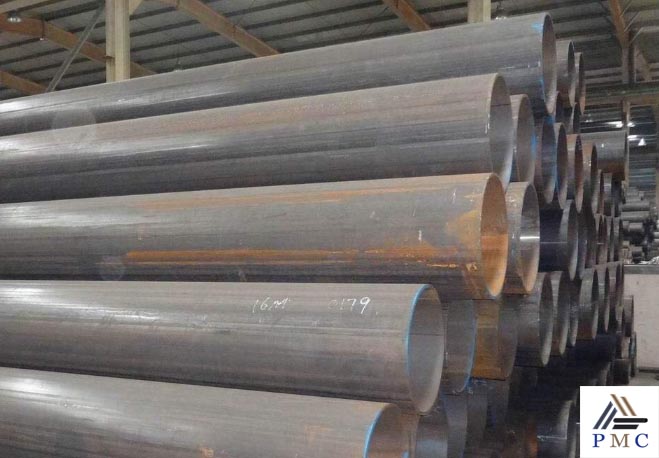
Selection Criteria for High Frequency Welded Pipe Welding Consumables
Date:2022-03-02 keywords: high frequency welded pipe, welding consumables
Selection criteria for high frequency welded pipe (ERW) welding consumables
Classification of welding rods:
(1) Classification by slag properties
(2) Classification by electrode usage
Can be divided into: structural steel electrodes, molybdenum and chromium molybdenum heat-resistant steel electrodes, stainless steel electrodes, surfacing electrodes, low temperature steel electrodes, cast iron electrodes, nickel and nickel alloy electrodes, copper and copper alloy electrodes, aluminum and aluminum alloy electrodes and special 10 categories such as welding rod.
Compared with the acid electrode of the same strength level, the basic electrode has high ductility and toughness of the deposited metal, low diffusible hydrogen content, and strong crack resistance. Therefore, when the product design or welding procedure specification stipulates the use of alkaline electrodes, acid electrodes cannot be used instead. However, the welding process performance of alkaline electrodes (including arc stability, slag removal, spatter, etc.) is poor, and it is highly sensitive to rust, water, and oil stains, and is prone to blow holes.
The characteristics of acid electrode and basic electrode are compared as follows:
1) Acid electrode
1. Sensitivity to water and rust is not great, bake at 100~150℃ for 1h before use
2. The arc is stable and can be welded with AC or DC
3. Welding current is high
4. Long arc operation possible
5. Poor transition effect of alloying elements
6. The penetration is shallow, and the weld formation is better
7. The molten slag is glassy, and it is more convenient to remove the slag
8. The normal and low temperature impact toughness of the weld is average
9. Welds have poor crack resistance
10. The hydrogen content of the weld is high, which affects the plasticity
11. Less fumes when welding
2) Basic electrode
1. Sensitivity to water and rust is high, bake at 300~350℃ for 1~2h before use
2. It is necessary to use DC reverse welding; after adding arc stabilizer to the coating, it can be used for both AC and DC welding
3. Acid welding of the same specification is about 10% smaller
4. Short arc operation is required, otherwise it is easy to cause porosity
5. Good transition effect of alloying elements
6. The penetration is slightly deeper, and the welding seam is generally formed
7. The slag is crystalline, and the slag removal is not as good as that of the acid electrode
8. The normal and low temperature impact toughness of the weld is higher
9. Good crack resistance of welds
10. Low hydrogen content in welds
11. Slightly more smoke during welding
Classification of welding rods:
(1) Classification by slag properties
Welding electrodes can be divided into two categories: acid electrodes and alkaline electrodes. The electrode whose slag is mainly acid oxide is called acid electrode. The electrode whose slag is mainly alkaline oxide and calcium fluoride is called alkaline electrode. Among carbon steel electrodes and low-alloy steel electrodes, low-hydrogen electrodes (including low-hydrogen sodium, low-hydrogen potassium, and iron powder low-hydrogen electrodes) are basic electrodes; electrodes of other coating types are acid electrodes.

(2) Classification by electrode usage
Can be divided into: structural steel electrodes, molybdenum and chromium molybdenum heat-resistant steel electrodes, stainless steel electrodes, surfacing electrodes, low temperature steel electrodes, cast iron electrodes, nickel and nickel alloy electrodes, copper and copper alloy electrodes, aluminum and aluminum alloy electrodes and special 10 categories such as welding rod.
Compared with the acid electrode of the same strength level, the basic electrode has high ductility and toughness of the deposited metal, low diffusible hydrogen content, and strong crack resistance. Therefore, when the product design or welding procedure specification stipulates the use of alkaline electrodes, acid electrodes cannot be used instead. However, the welding process performance of alkaline electrodes (including arc stability, slag removal, spatter, etc.) is poor, and it is highly sensitive to rust, water, and oil stains, and is prone to blow holes.
The characteristics of acid electrode and basic electrode are compared as follows:
1) Acid electrode
1. Sensitivity to water and rust is not great, bake at 100~150℃ for 1h before use
2. The arc is stable and can be welded with AC or DC
3. Welding current is high
4. Long arc operation possible
5. Poor transition effect of alloying elements
6. The penetration is shallow, and the weld formation is better
7. The molten slag is glassy, and it is more convenient to remove the slag
8. The normal and low temperature impact toughness of the weld is average
9. Welds have poor crack resistance
10. The hydrogen content of the weld is high, which affects the plasticity
11. Less fumes when welding
2) Basic electrode
1. Sensitivity to water and rust is high, bake at 300~350℃ for 1~2h before use
2. It is necessary to use DC reverse welding; after adding arc stabilizer to the coating, it can be used for both AC and DC welding
3. Acid welding of the same specification is about 10% smaller
4. Short arc operation is required, otherwise it is easy to cause porosity
5. Good transition effect of alloying elements
6. The penetration is slightly deeper, and the welding seam is generally formed
7. The slag is crystalline, and the slag removal is not as good as that of the acid electrode
8. The normal and low temperature impact toughness of the weld is higher
9. Good crack resistance of welds
10. Low hydrogen content in welds
11. Slightly more smoke during welding
News Update :
45° Short Radius Elbows and Long Radius Elbows...
©2017 Permanent Steel Manufacturing Co.,Ltd https://www.permanentsteel.com All Rights Reserved.
Terms of Sale|Privacy Policy


